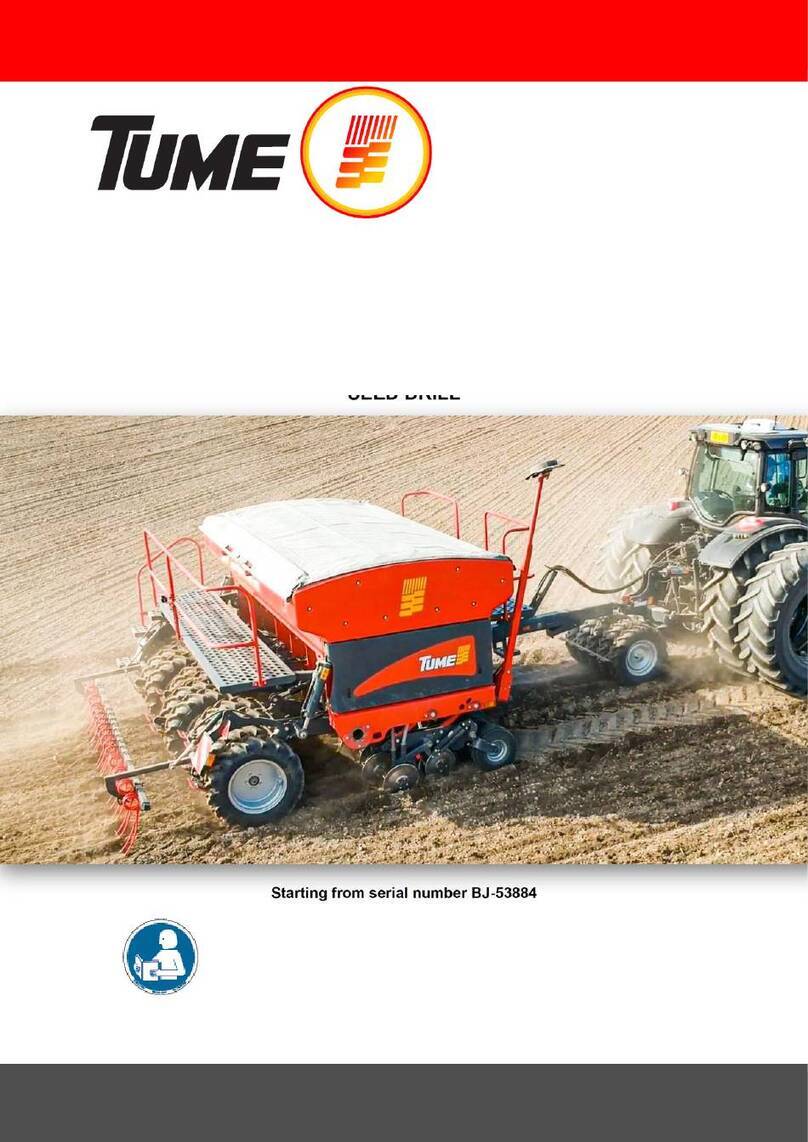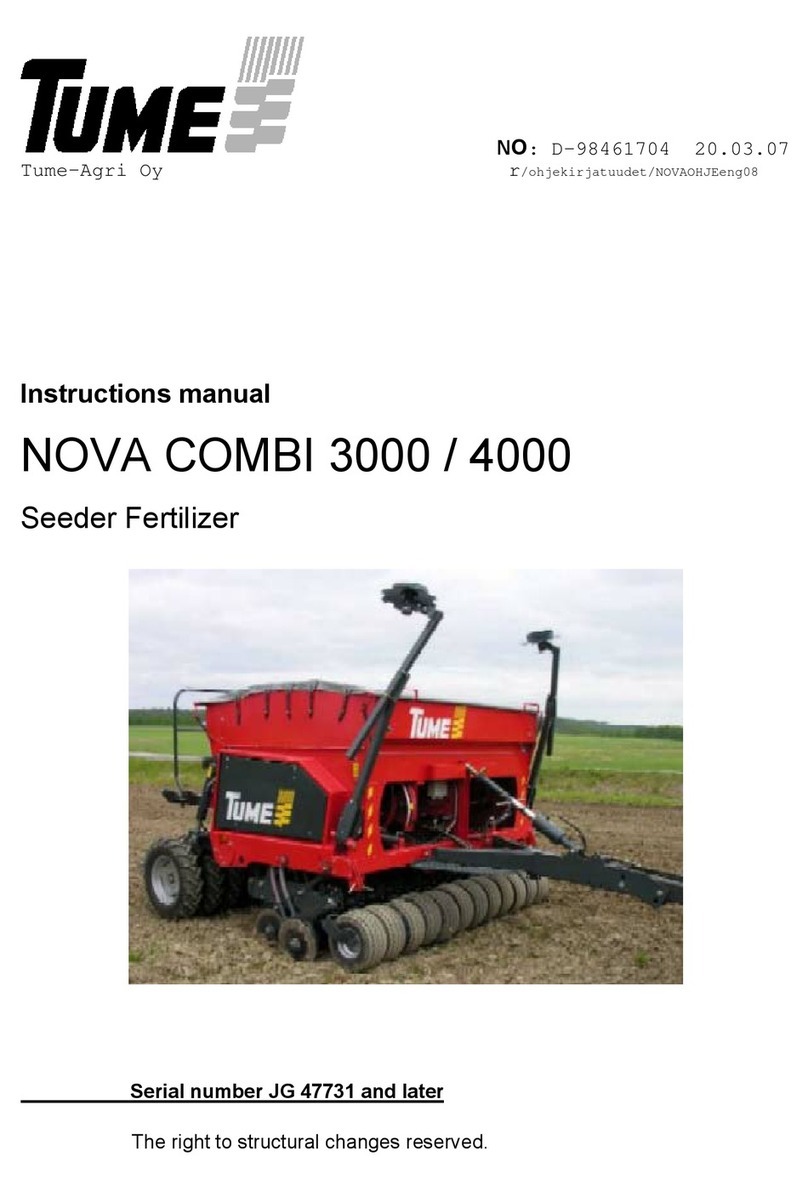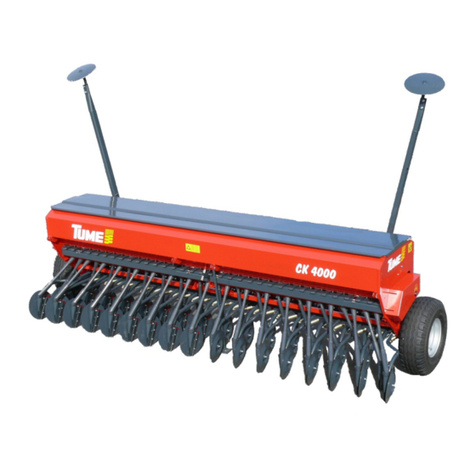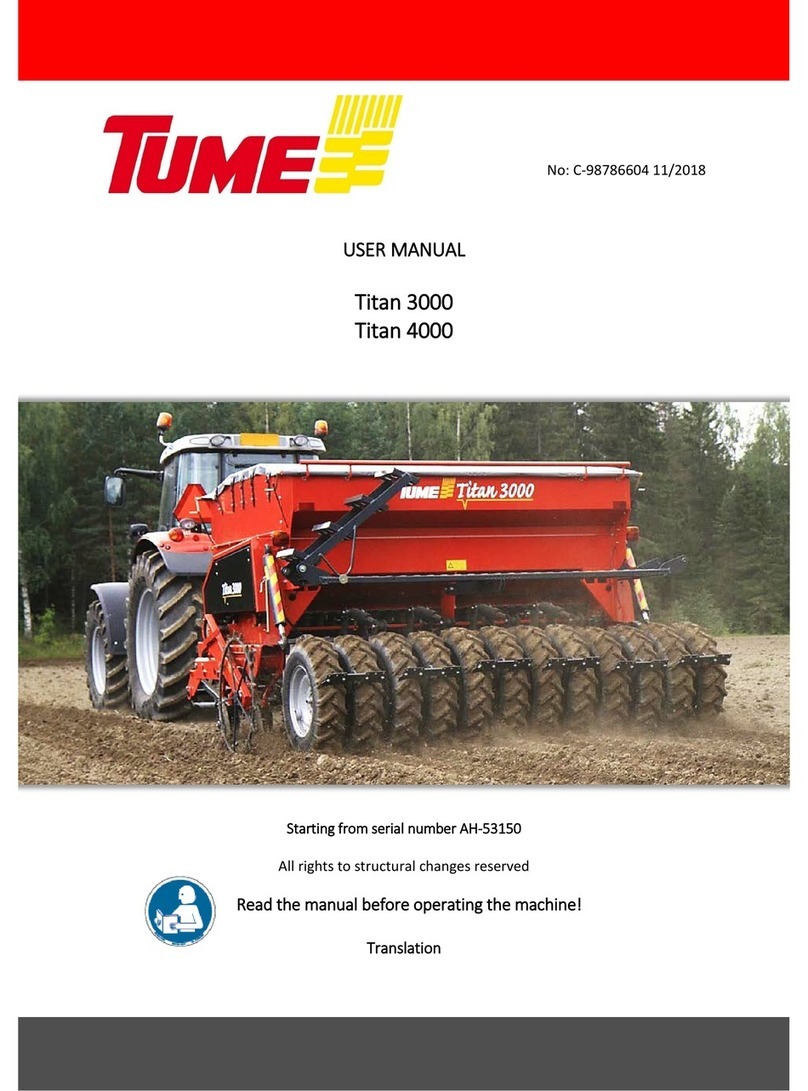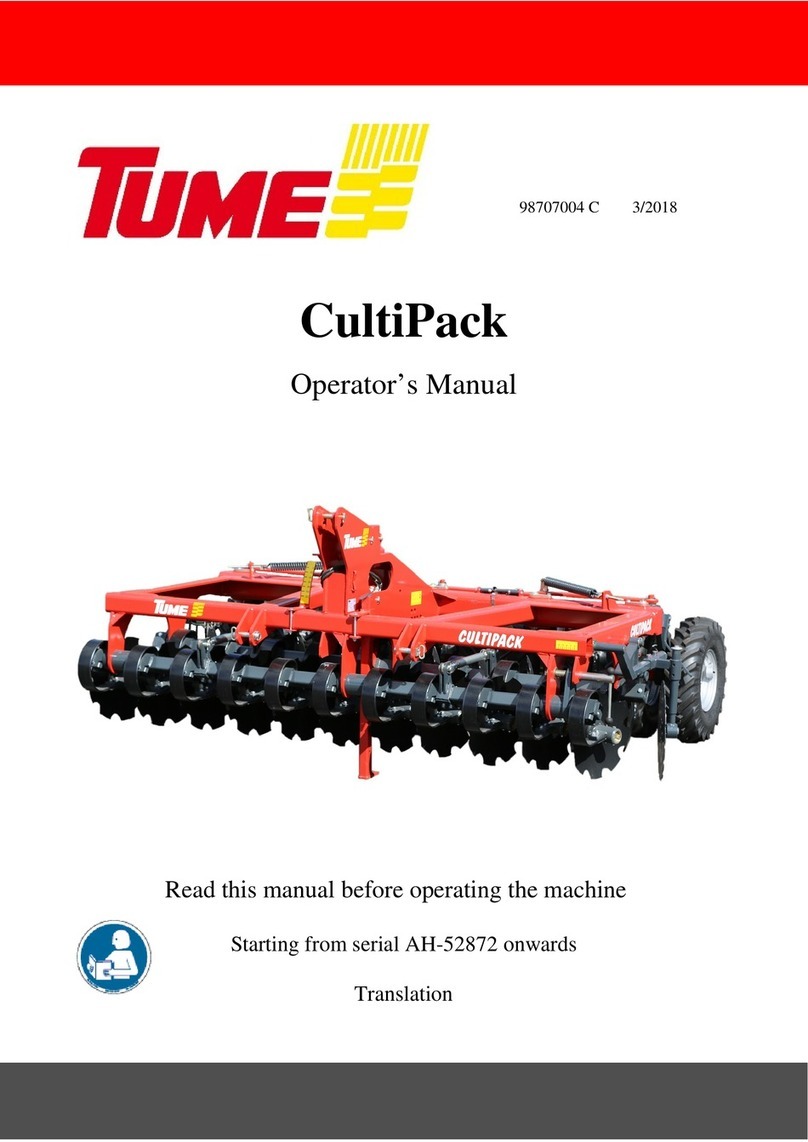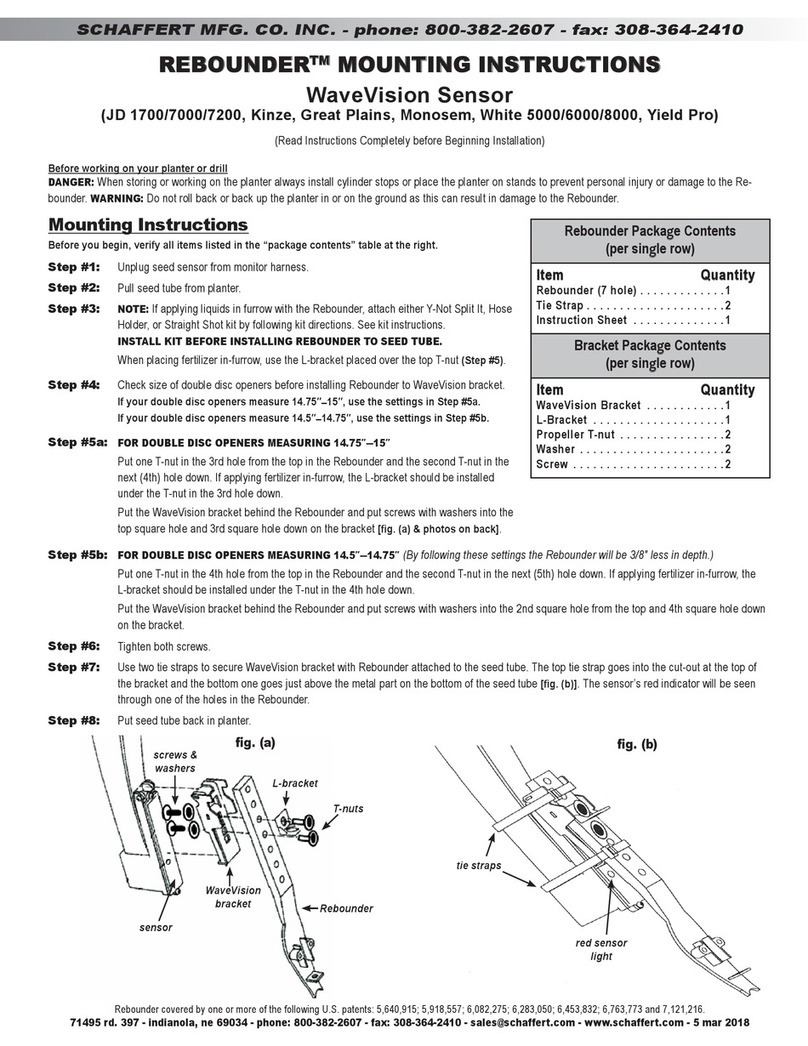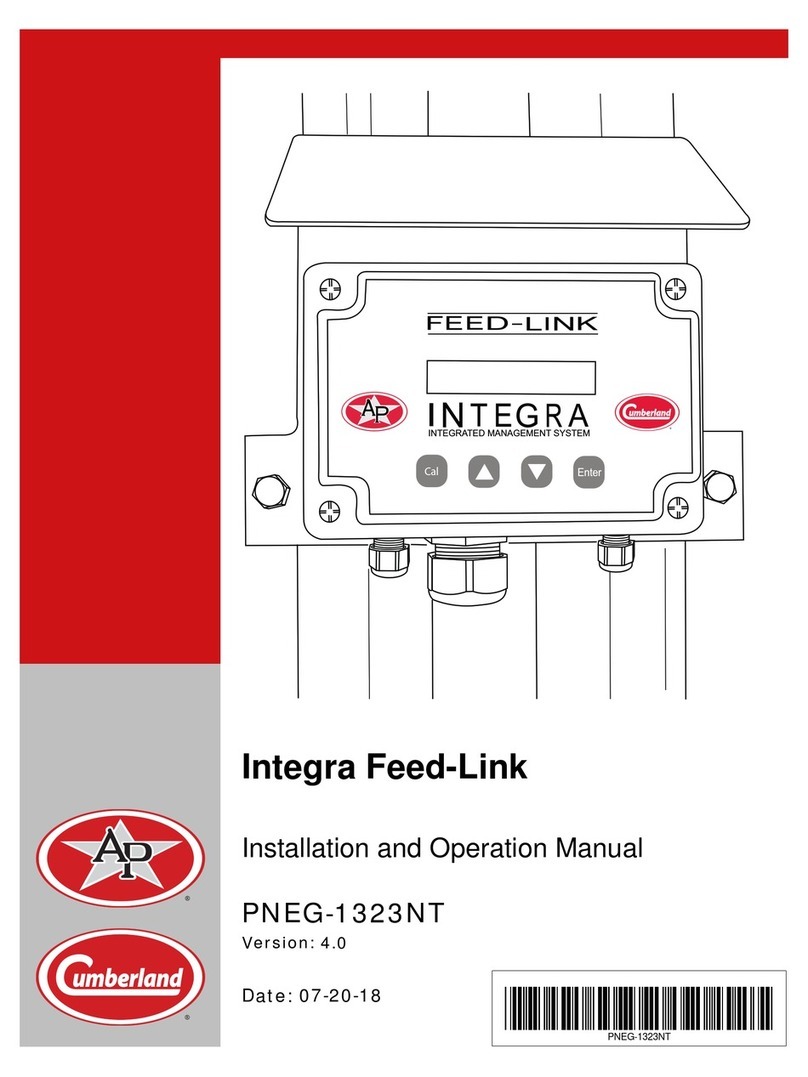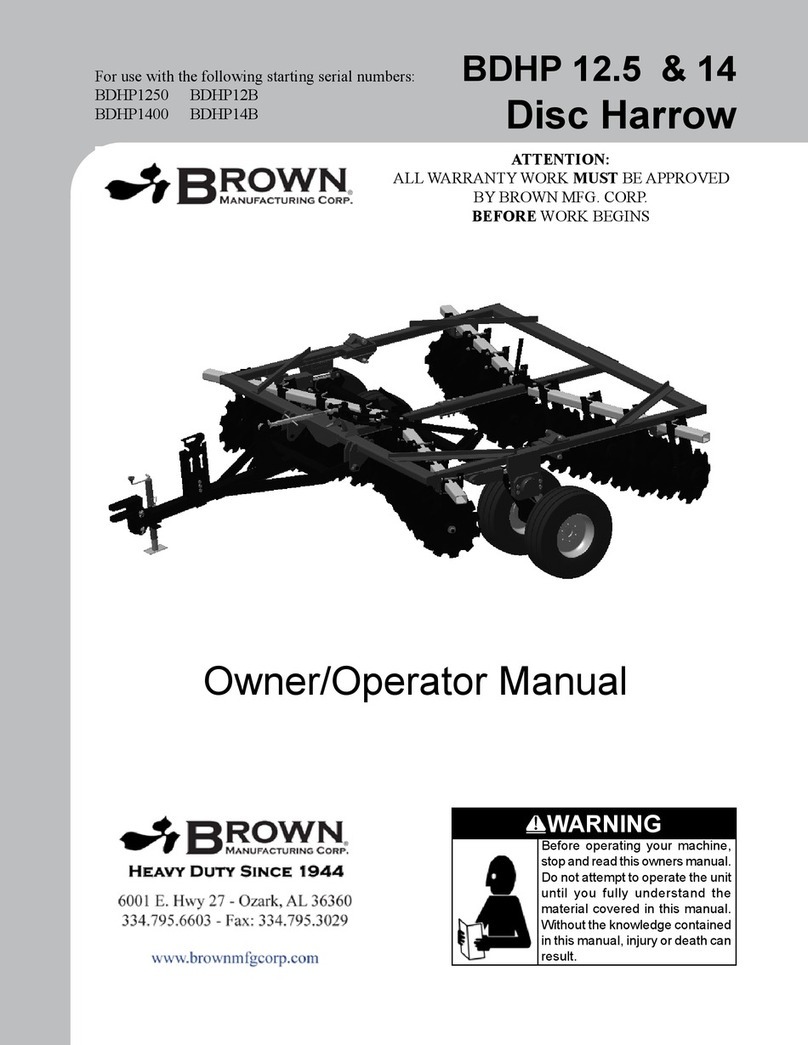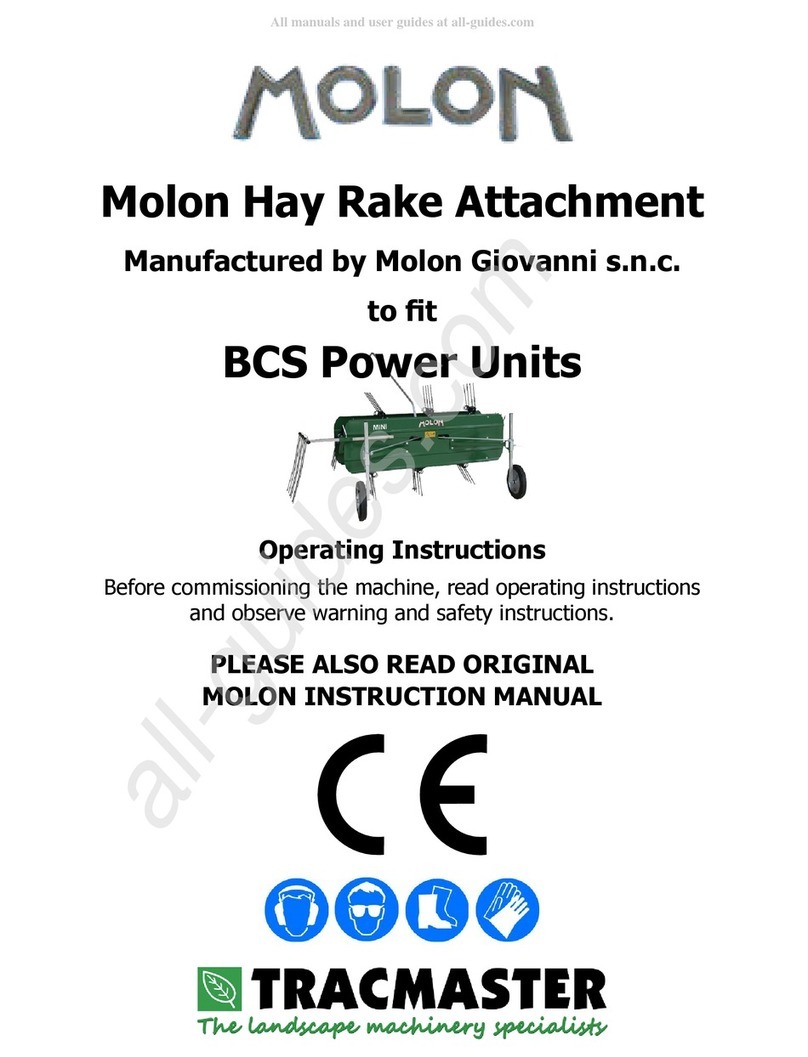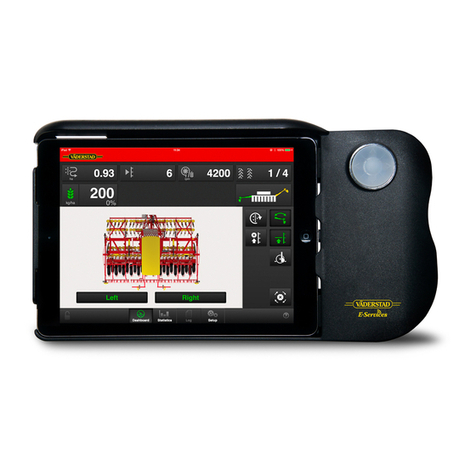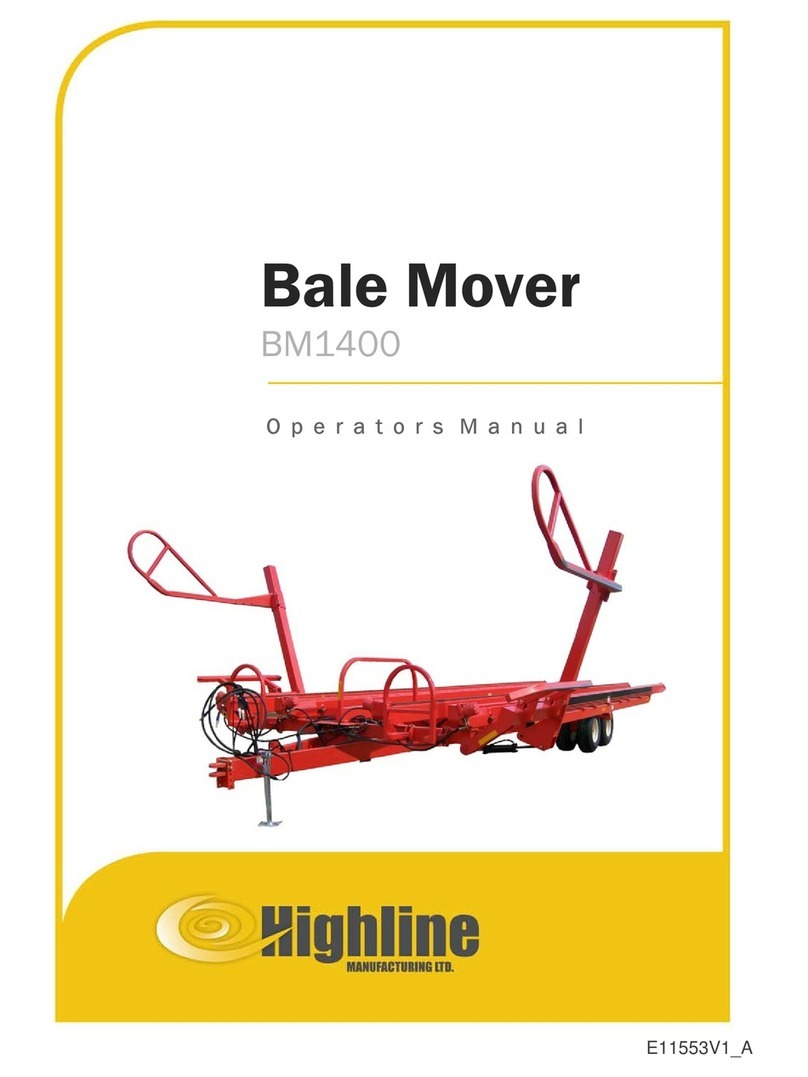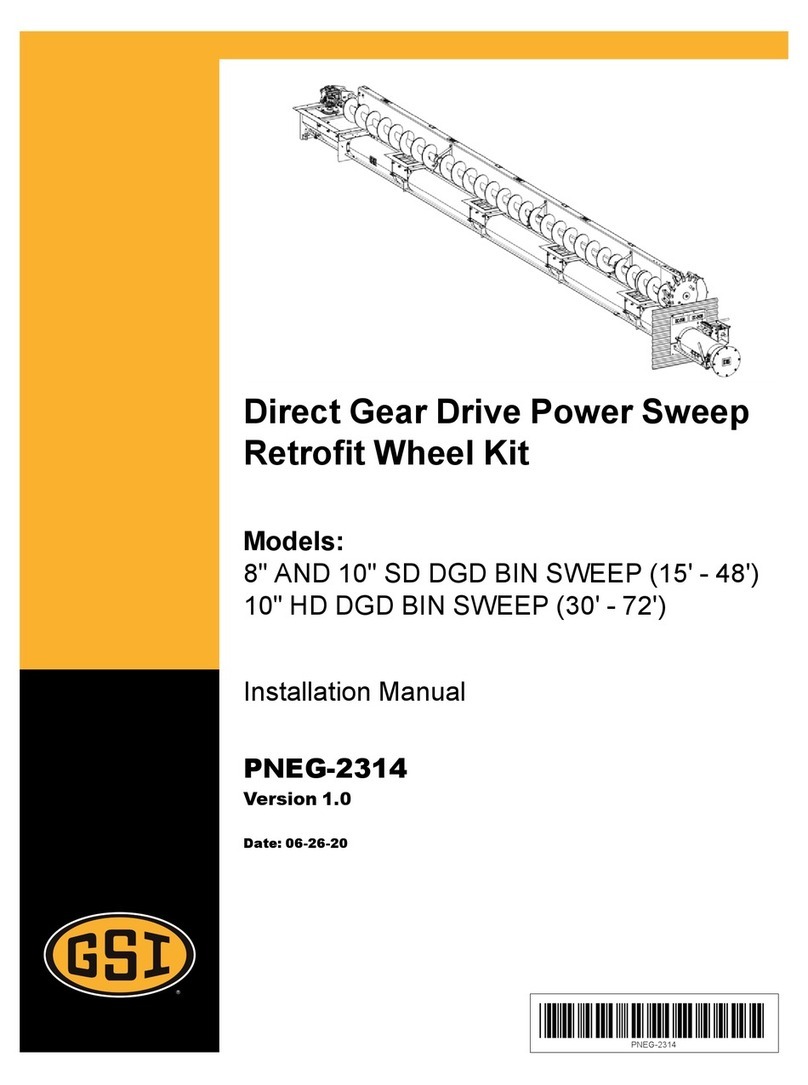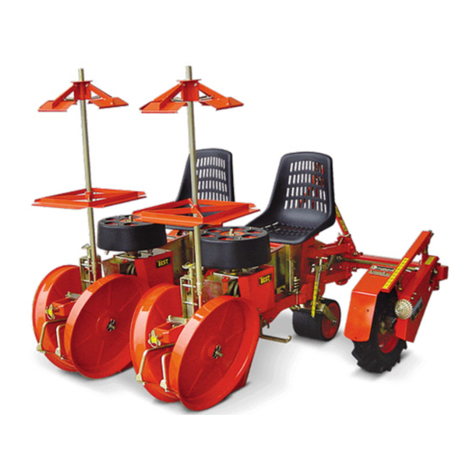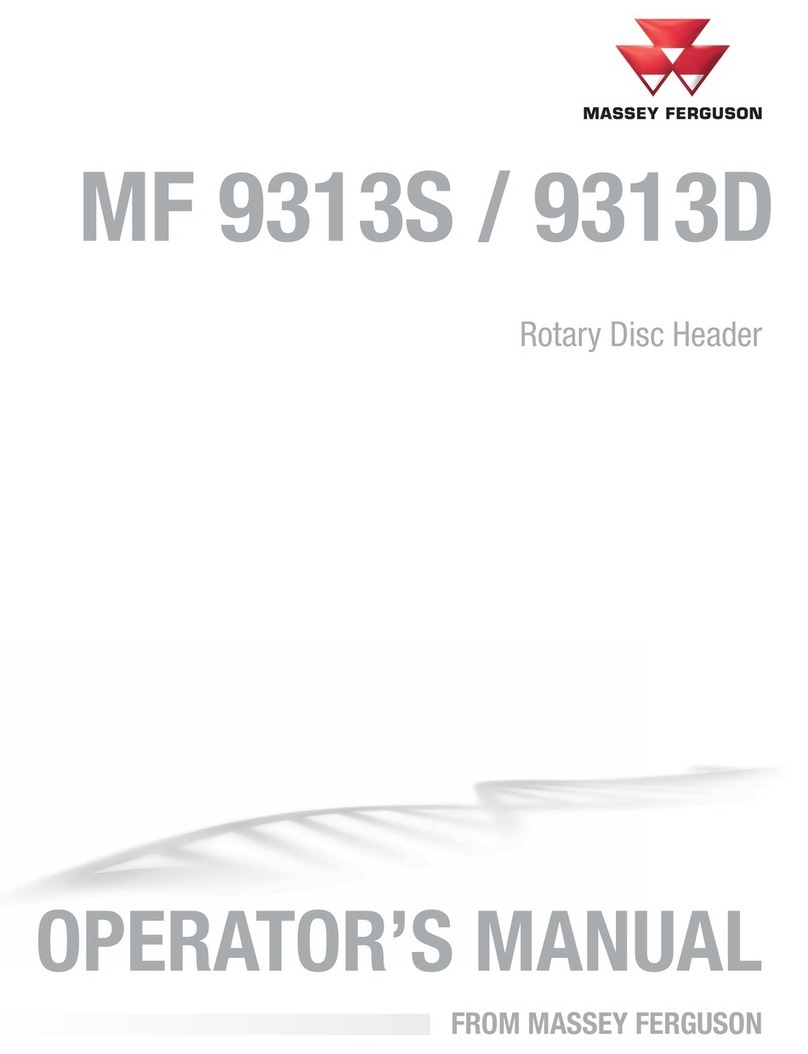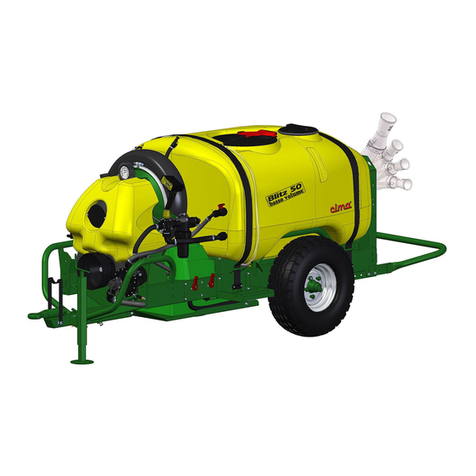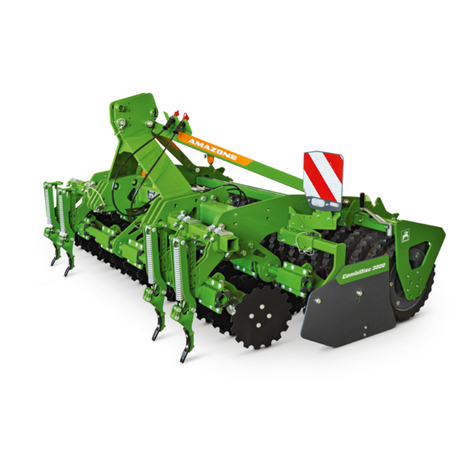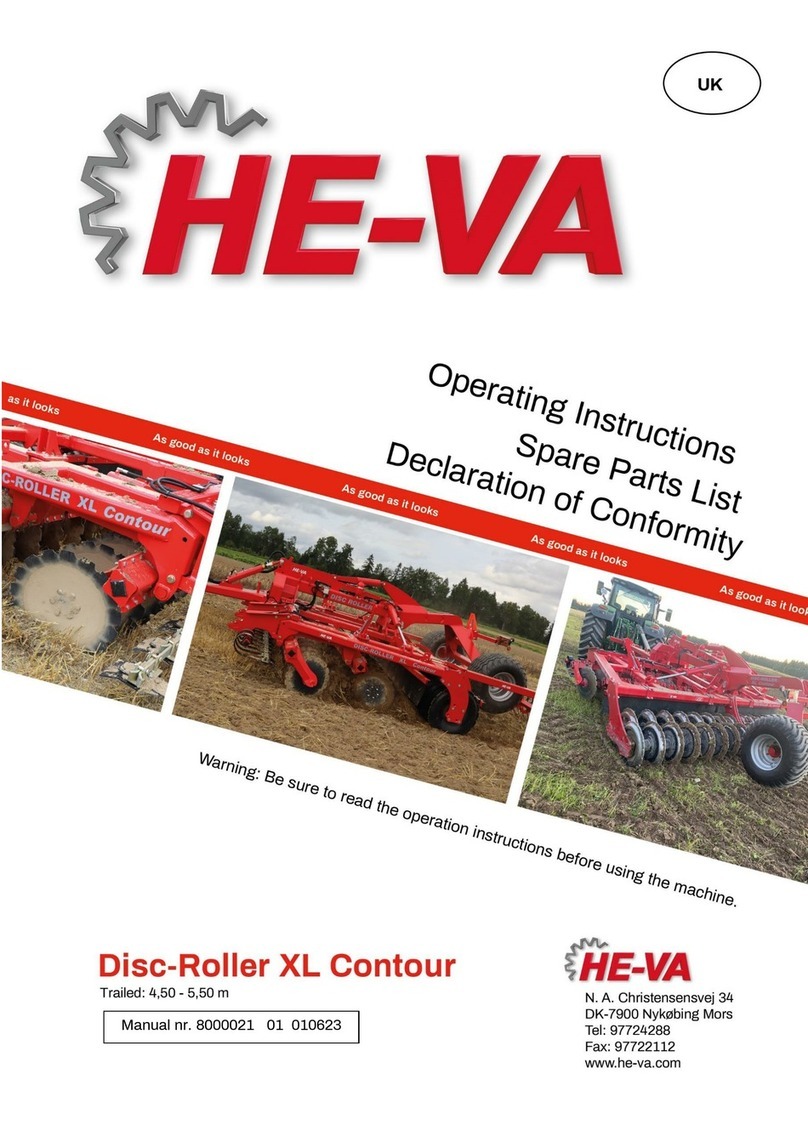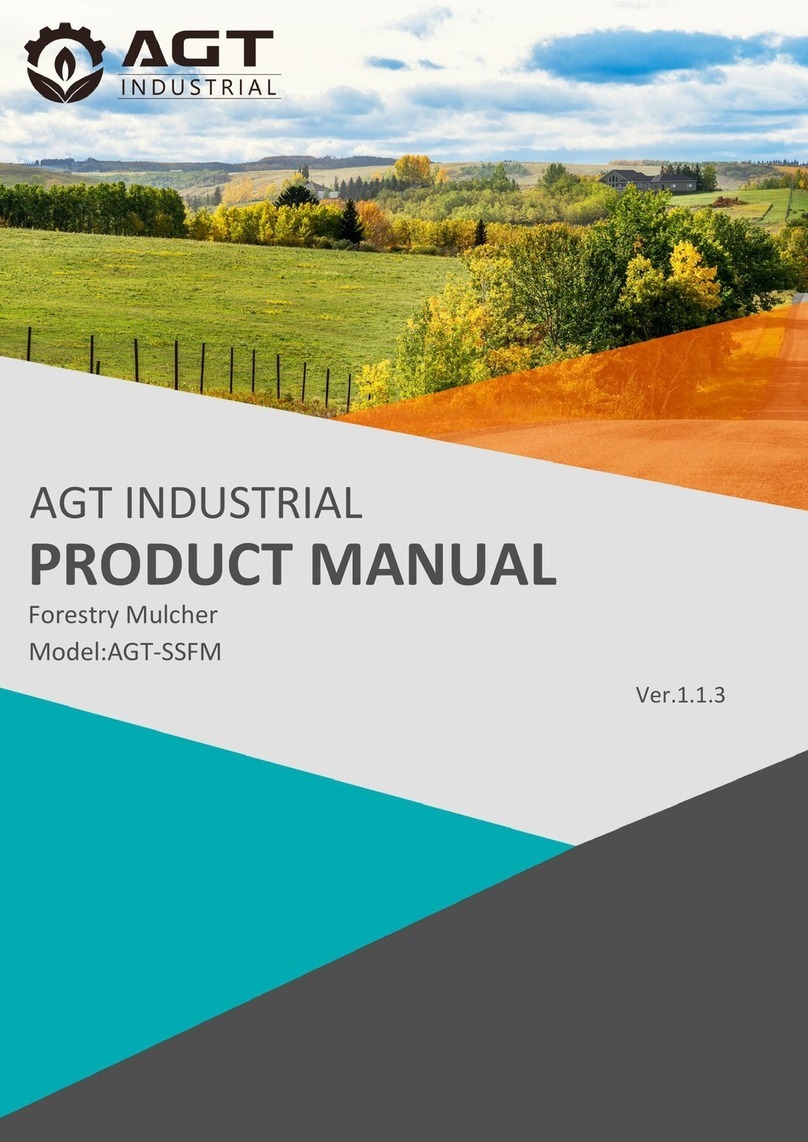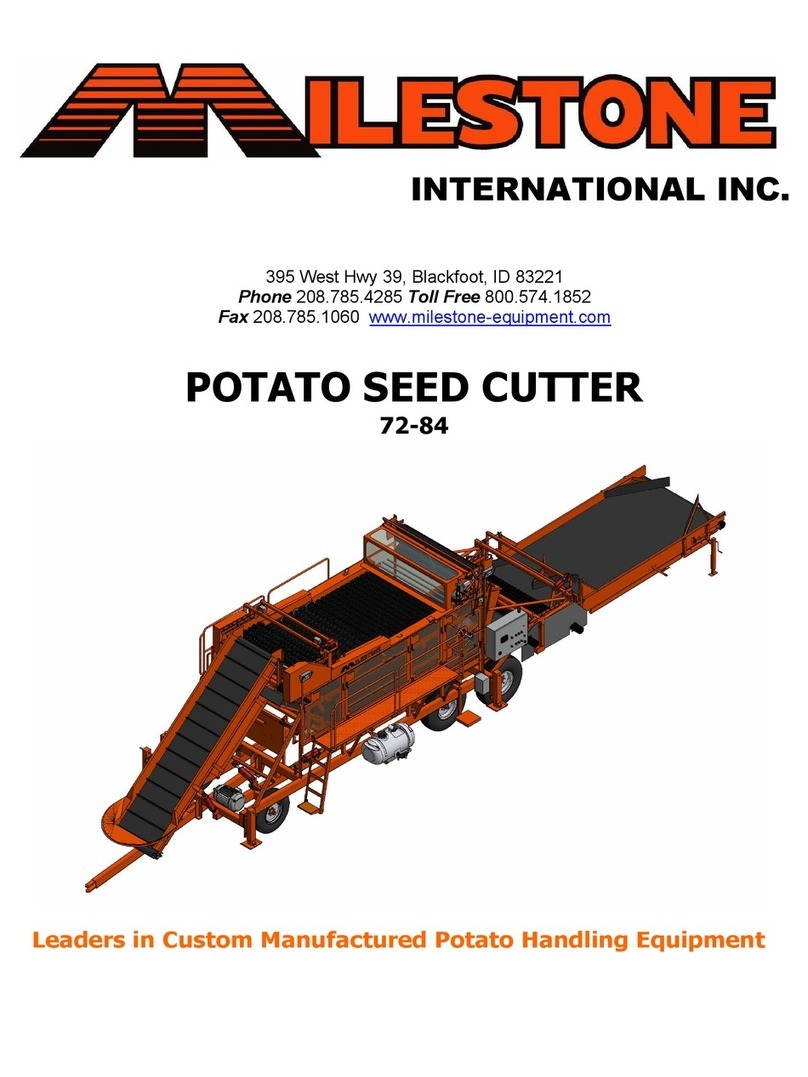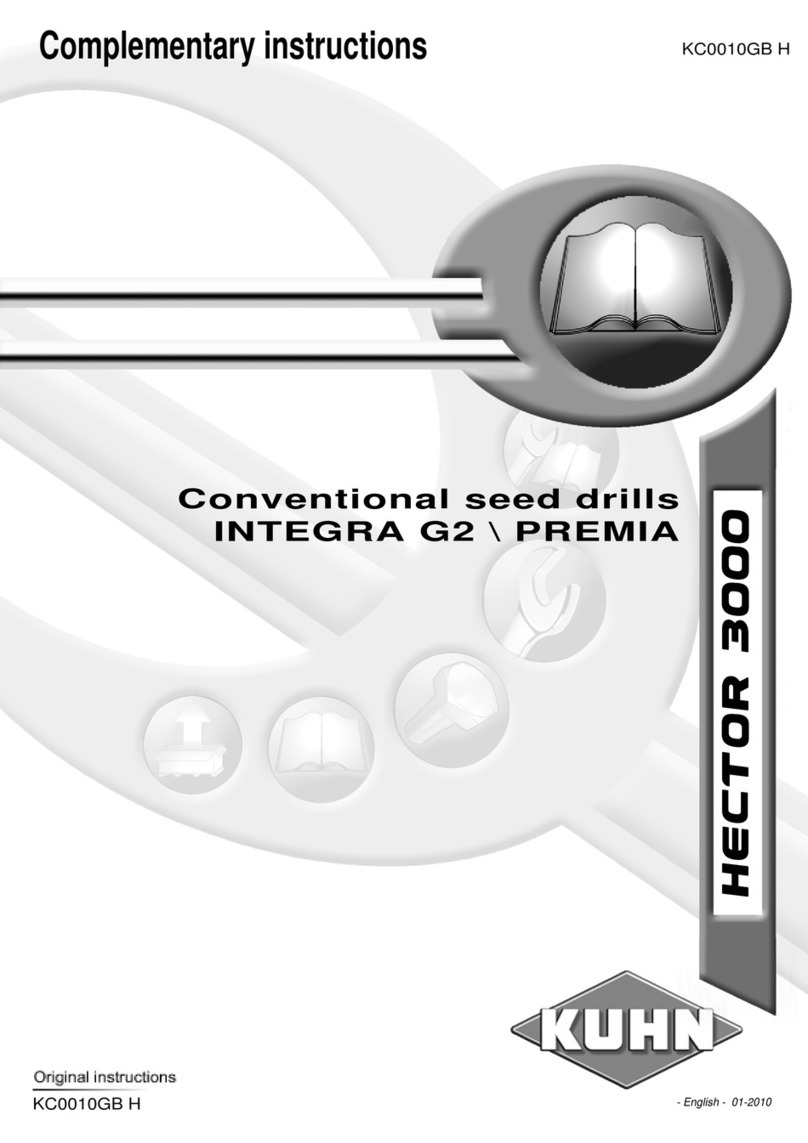
KL 2500/3000
7
Intended use of the machine
The TUME KL seed drill can be used to sow most common grain, oil and herbaceous
plant seeds, as well as peas and beans. Granular fertilizer can also be sown using a
fertilizer coulter. Seed dressing and grass seed equipment may be acquired as optional
equipment. Such equipment enables dressing during drilling and grass seed sowing to
protect the seeds. In addition, the machine can be used separately for fertilizing or drilling
only.
Seeds and fertilizers needed for work can be transported to nearby fields in machine
containers if the roads used for transport are in good condition. The maximum
permissible driving speed in this case is 15 km/h. On uneven roads and long drives,
transport must be carried out with the machine in empty condition. The machine may not
be used to transport anything else but seeds and fertilizers required for immediate use,
and no additional load, objects, animals or passengers are allowed in the containers or
on top of the machine.
General machine capabilities
The fertilizer feeding equipment is designed for the feeding of granular fertilizers. The use
of powder-type fertilizers will usually cause difficulties. At worst, powder fertilizers may
cause the feeding equipment to jam, and for this reason, only granular fertilizers should
be used. Fertilizer application depth can be adjusted between 12 cm and the surface.
Drills can be fitted with different seed coulters depending on the prevailing conditions,
see Fig. 19. Under difficult, blocking conditions, the machine operates at its best when
equipped with disc coulters. Other alternatives drag coulters are usually used in hard soil
types, when the basic tillage is plowing.
The drill weighting adjustment range covers the needs for all ground types. The drill’s
suspension is designed in such a way that ground unevenness will not significantly
impact drill weighting. For shallow drilling, especially on light grounds, the drill
suspension must be adjusted to a low level. For rigid ground types and deeper planting
applications, higher weightings must be used.
Standard fertilizer coulters, see Fig. 17, are narrow and operate in a vertical position.
These can be used under most conditions. Fertilizer coulters have a high degree of
flexibility, and therefore do not block easily. Laser models are supplied with standard
plate drills on the seed side and single-disc fertilizer drills on the fertilizer side, see Fig.
18. Laser models are suitable for all kinds of sowing.
For conditions where wear is a particular concern, the tips of drag coulters can be fitted
with replaceable ceramic pieces, and fertilizer coulter tips can be reinforced with wolfram
carbide. This can increase durability up to ten-fold compared to ordinary means.
